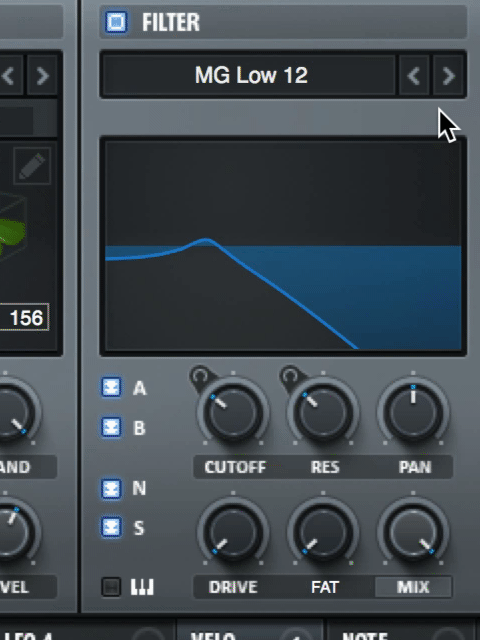Illustration: Yann Bastard
As it becomes increasingly difficult to escape the cold sheen of the digital world, a wave of raw nostalgia has been sweeping across musical spectrums.
More and more producers are looking backwards for inspiration and utilizing some of the past’s best (and worst) pieces of gear to bring back that old school magic. In this article, let’s use Serum, one of today’s most capable digital instruments, to turn back the clock and learn how to add some analog flavor to our digital sounds.
Below is an analog house track that features bass, lead, and pad sounds created using the wavetable synth – we’ll break down how we crafted each in more detail. Splice the project from the dna player to listen to and experiment directly with the track yourself, and grab the Serum presets for each sound at the very end of this blog post.
This blog post mentions Splice Studio, which is no longer active. Learn more about the shutdown here.
Concept: heat wave
When things are recorded, there will always be some degree of distortion and noise. Although this might sound like a negative, it’s actually kind of amazing in small quantities for adding a feeling of fullness. Distortion adds new harmonic content to a sound, while noise can help fill in sonic ‘gaps,’ contributing to a richer whole. So when we’re making music in-the-box, it can be helpful to add moments where saturation (another name for the somewhat interchangeable ideas of drive and distortion) and noise occurs. This can help us break out of the laptop-y feel that so many productions feel trapped by.
Example: retro bass
Utilizing the tried-and-true setup of a saw-based oscillator on top and a pulse wave-based waveform an octave below, we’ve created a snappy bass sound by dialing both ENV 1 and ENV 2 with a quick attack and release — ENV 2 is modulating the filter cutoff.

To add fullness and grit, we’ve cranked the drive and fat knobs on Serum’s filter as well as the onboard distortion and Ableton’s new Pedal effect. By using saturation and distortion in stages, it’s more likely we’ll end up with a more engaging sound than if we left everything up to one effect, as each step will add its own unique character to the sound. New harmonics generated by distorting and saturating our bass sounds allow them to be heard in the mix while remaining quiet enough to not ruin it.

For some added flavor and a dash of randomness, LFO 1 is slowly modulating the wavetables of OSC 1 and 2 while the velocity is modulating the resonance ever so slightly. Once again, having things be a little unreliable will go a long way to create subtle layers of interest for the listener and hopefully add some stamina to sounds that repeat over and over.
Concept: keep it loose
Along with noise and distortion, natural pitch and tempo variation are going to be part of any recording — human or machine. These imperfections, and the character of being ‘off-the-grid’ is usually why recorded content tends to be more engaging. This doesn’t mean that things have to be recorded to be engaging, but we should probably consider how we can impart some imperfect magic into our in-the-box creations.
Example: infinite lead
For the lead, we wanted something that felt just a little bit different on every hit. So, on top of making sure the MIDI remained distinctly un-quantized, we used Serum’s LFOs (set to ‘free’) to modulate the detune amount on each oscillator along with ENV 1’s release time. This means that nearly every time a note is played, it will sound different. These efforts to invoke bits of randomness ensure that this lead line could loop all day long without ever truly repeating.


Concept: friendly limitations
Serum’s near-unlimited modulation options make it the perfect candidate to create motion-filled sounds such as pads. And while it’s easy to get carried away with endless possibilities, it can be useful to take a step back (maybe a couple decades) in order to arrive to a genuine destination, rather than getting lost in constant tweaking. In this patch, we’ve purposefully limited ourselves to the capabilities of one of music’s most beloved synthesizers, the Juno 106.
With a straightforward layout and undeniable vibe, Junos have been a fixture in personal and professional studios for decades, appearing on countless records spanning a wide variety of genres. As with many classic instruments, the Juno’s limitations are dually its best and worst feature. Because the upfront options are fairly limited, you’re pretty much always destined to get something that sounds like it came out of a Juno.
Example: Juno pad
Here’s how we set up this patch according to the Juno’s limitations:
- 3 oscillators (1 saw wave, 1 pulse wave, and 1 sub oscillator) and a big fat square wave stuck one octave below oscillators 1 and 2. Conveniently, Serum actually has wavetables inspired by the Juno along with actual noise from a Juno 106.
- 6 voices – this means our chords are limited to 6 notes and that we can’t simply crank up unison on our oscillators to get wide, vibe-y sounds. We’ve gone with 7th chords for a deeper feel.
- 1 envelope – the filter and the AMP envelope are shared, so that means sticking with ENV 1 on Serum for any envelope modulations.
- 1 LFO – we broke the rules on this one to give Serum some analog flavor by subtly modulating the fine tuning of OSC A and B along with the waveshape of OSC B. Oscillators on hardware synths routinely swim in and out of both phase and tune, which is part of what makes them feel alive.

- 1 chorus – whether it’s the chorus 1 or 2 on the Juno 106 (or the unusual feature of combining both on the Juno 60), chorus is an essential part of any Juno sound.
Seeing the bigger picture
Often, the key to achieving a nostalgic or vintage sound is remembering not to overcomplicate things. Many of the most influential instruments in music have severe limitations that, instead of holding the instrument back, become core parts of what make the instrument iconic. And while the endless capabilities of an instrument such as Serum are theoretically amazing, unlimited options can often be counterproductive to making decisions. These limitations, combined with the natural variations inherent to recording, serve as perfect points for creators to impart their own unique character into a sound or recording and capture the subtle magic that comes from working within the physical world.
Click here to download the Serum presets for the bass, lead, and pad sounds.
Click here to learn more about IO Music Academy’s music production program.
Get your hands on Serum and its state-of-the-art wavetable synthesis for just $9.99/mo.
September 24, 2018



